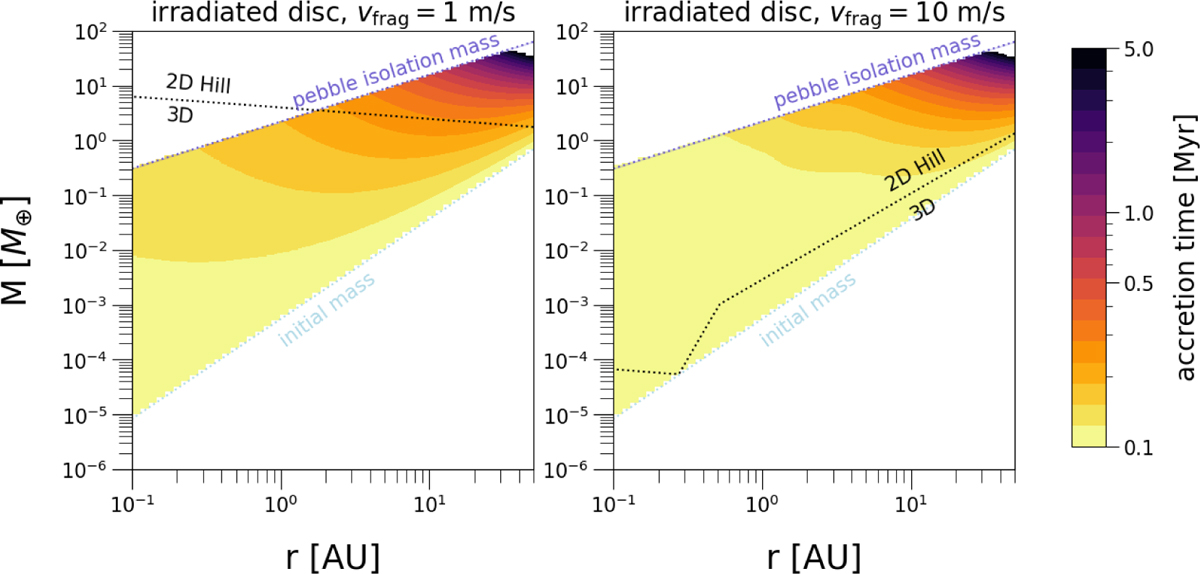Fig. 3

Download original image
Planetary growth timescales in an irradiated disc, for different fragmentation velocities (vfrag = 1 m/s in the left panel, vfrag = 10 m/s in the right panel). The dotted black line represents the transition mass between the 3D and 2D Hill accretion regimes given by Eq. (28). In the high fragmentation velocity case, the transition line is segmented because of the pebble size transition from being drift-limited in the Epstein regime to drift-limited in the Stokes regime to fragmentation limited (see orange branch, right panel of Fig. 2), while in the case of a lower fragmentation velocity the pebbles are always fragmentation limited (blue branch, Fig. 2). The dotted light blue line and the dotted violet line mark the initial embryo masses and the pebble isolation masses, respectively. Higher fragmentation velocities lead to faster growth rates, owed to an earlier transition between the 3D and the more efficient 2D Hill accretion regimes. Indeed, the larger pebbles (cfr. Fig. 2) are more settled towards the disc midplane (cfr. Eq. (15)), which implies that the criterion in Eq. (27) is fulfilled earlier on than in the lower fragmentation velocity case.
Current usage metrics show cumulative count of Article Views (full-text article views including HTML views, PDF and ePub downloads, according to the available data) and Abstracts Views on Vision4Press platform.
Data correspond to usage on the plateform after 2015. The current usage metrics is available 48-96 hours after online publication and is updated daily on week days.
Initial download of the metrics may take a while.


